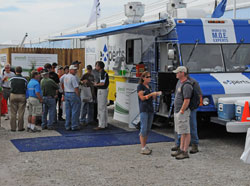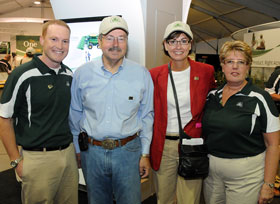R-CALF USA is not very happy with the way “mainstream” livestock media editorialized about the DOJ/USDA workshop in Colorado last week that was primarily about the proposed Grain Inspection, Packers and Stockyards Administration (GIPSA) rule. In fact, if it were up to the president of the organization, he would “Fire Them All.” I guess hangin’s too good for ’em!
 The “Op-Ed by R-CALF USA President Max Thornsberry, DVM, MBA” directly targets the editors of BEEF magazine, Drovers and Beef Today for what he calls “disparaging and immensely disrespectful” editorials they wrote about the proposed rule and the workshop, prior to it being held last Friday. He charges the editors with attempting “to discourage attendance or to draw attention away from the joint hearing on competition in animal agriculture.”
The “Op-Ed by R-CALF USA President Max Thornsberry, DVM, MBA” directly targets the editors of BEEF magazine, Drovers and Beef Today for what he calls “disparaging and immensely disrespectful” editorials they wrote about the proposed rule and the workshop, prior to it being held last Friday. He charges the editors with attempting “to discourage attendance or to draw attention away from the joint hearing on competition in animal agriculture.”
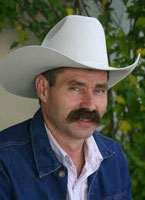 Dr. Thornsberry is very harsh toward the media in general, saying the beef industry publications just “want to appeal to the big, to those that represent the powerful.” He uses the word “disrespect” repeatedly, yet he clearly has no respect for the very competitive nature of the media business. “I think to be an editor of one of these magazines it should be a requirement to have to feed two pens of fat cattle a year and to independently market them,” he writes. “How can they speak with such contempt to those of us who make a living in the beef production sector, without any real knowledge of how the business operates within the United States today? It would be like me being the editor of Cosmopolitan.”
Dr. Thornsberry is very harsh toward the media in general, saying the beef industry publications just “want to appeal to the big, to those that represent the powerful.” He uses the word “disrespect” repeatedly, yet he clearly has no respect for the very competitive nature of the media business. “I think to be an editor of one of these magazines it should be a requirement to have to feed two pens of fat cattle a year and to independently market them,” he writes. “How can they speak with such contempt to those of us who make a living in the beef production sector, without any real knowledge of how the business operates within the United States today? It would be like me being the editor of Cosmopolitan.”
Maybe you should try that before you criticize, Dr. T. You have no idea what it is like to compete in the media world, which has its own version of packers in an industry that is progressively consolidating on all sides. And when it comes to ag media, you’d probably be surprised at how many of the reporters and editors have marketed their own cattle, either now or in a past life. They probably know more about the industry from more angles than the average cattle producer because that is their job.
Incidentally, I thought the editorials were way more fair than some of the GIPSA stories that we did here on Agwired. Sure, we did an interview with R-CALF to let them explain their position regarding the GIPSA rule, we did have live coverage of the R-CALF rally the night before the hearing, and we did live webcast the entire event so that anyone who wanted to listen could hear all viewpoints. You can thank the National Cattlemen’s Beef Association for all of that because they sponsored our coverage and contracted us to do a series of interviews with producers who are concerned about the proposed rule. Thanks to NCBA we were actually able to bring the workshop live with comments from both sides of the issue to over 800 people who could not attend, and audio from some of the panels is now available for listen or download. Thousands of other people have seen our photos, listened to our interviews and interacted with us on this issue. We would not have been able to do without NCBA’s support. Like the rest of the ag media, this website isn’t a hobby farm – we need to make money in order to stay in business.
Sorry, you can’t fire us, or hang us either – you can’t even sue us for not being fair. But, maybe a little respect would be in order.
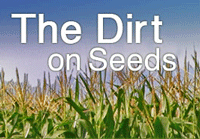 I remember when the idea of a company blog was just so “silly.” But really, it is amazing how the self publishing platform has grown. The latest entry coming to my attention this morning is The Dirt On Seeds by Syngenta Seeds. Joanna has conducted a couple of interviews with Syngenta here at the Farm Progress Show btw. We’ll feature those soon.
I remember when the idea of a company blog was just so “silly.” But really, it is amazing how the self publishing platform has grown. The latest entry coming to my attention this morning is The Dirt On Seeds by Syngenta Seeds. Joanna has conducted a couple of interviews with Syngenta here at the Farm Progress Show btw. We’ll feature those soon.
 The “Op-Ed by R-CALF USA President Max Thornsberry, DVM, MBA” directly targets the editors of
The “Op-Ed by R-CALF USA President Max Thornsberry, DVM, MBA” directly targets the editors of  Dr. Thornsberry is very harsh toward the media in general, saying the beef industry publications just “want to appeal to the big, to those that represent the powerful.” He uses the word “disrespect” repeatedly, yet he clearly has no respect for the very competitive nature of the media business. “I think to be an editor of one of these magazines it should be a requirement to have to feed two pens of fat cattle a year and to independently market them,” he writes. “How can they speak with such contempt to those of us who make a living in the beef production sector, without any real knowledge of how the business operates within the United States today? It would be like me being the editor of Cosmopolitan.”
Dr. Thornsberry is very harsh toward the media in general, saying the beef industry publications just “want to appeal to the big, to those that represent the powerful.” He uses the word “disrespect” repeatedly, yet he clearly has no respect for the very competitive nature of the media business. “I think to be an editor of one of these magazines it should be a requirement to have to feed two pens of fat cattle a year and to independently market them,” he writes. “How can they speak with such contempt to those of us who make a living in the beef production sector, without any real knowledge of how the business operates within the United States today? It would be like me being the editor of Cosmopolitan.” 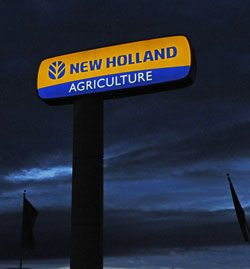



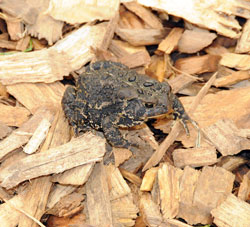
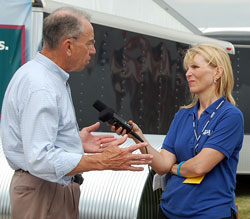
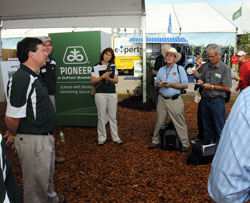
 Did you know that aquaculture is the fastest growing segment of the animal production industry? But, like every other segment, aquaculture producers are facing the challenge of expanding to feed a growing population and doing it in a sustainable manner.
Did you know that aquaculture is the fastest growing segment of the animal production industry? But, like every other segment, aquaculture producers are facing the challenge of expanding to feed a growing population and doing it in a sustainable manner.